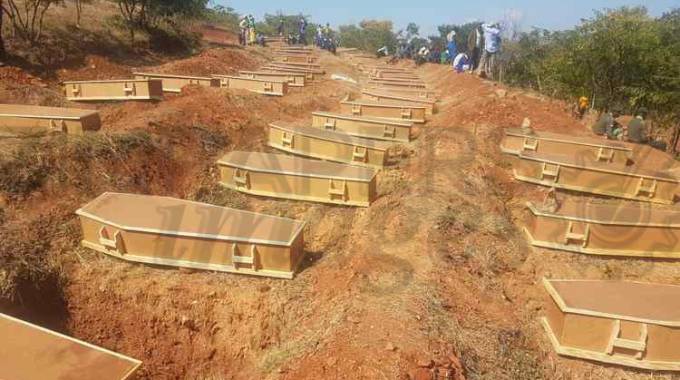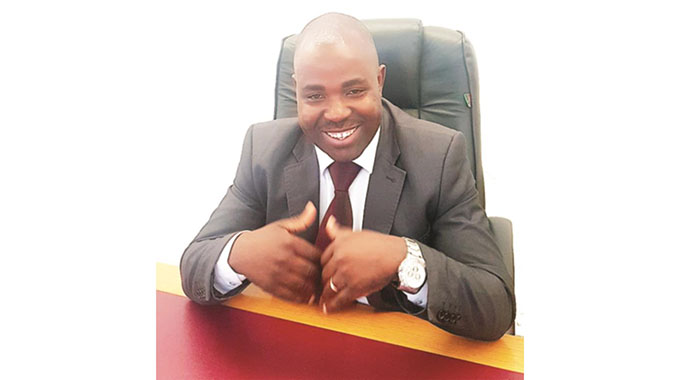Ode, ode Chiware: The horror of Rhodesia!

Isdore Guvamombe Saturday Lounge
The silence as one arrives at Chiware in Odzi near Rusape, is eerie and profound.
Only chirping birds that intermittently somersault, albeit, effortlessly from one tree branch to another or from one grass tuft to another, give a sign of life.
Distant cranking cattle bells give another sign of human existence, the resettled farmers. Otherwise it is quiet. Loud silence! The silence there speaks a lot.
The dearth of other sounds sends a chill down the spine. There, the dead speak to you from mineshafts they were dumped in, before you even know it. You feel it. Your hair rises. An aura of strangeness caresses your mind and soul. Strange!
A secondary forest of stunted indigenous bush shrubbery and overgrown tinder dry grass hides an array of disused mineshafts. The dusky red sodden soils speak the language of unparalleled fertility and mineral richness.
Not only do the environs provoke an adrenaline rush to the visitor, but it does tingle the brain and the inner self.
It communicates a message understood by the body without the spoken word. Here, the bowels of mother earth are pregnant, pregnant with products of callous murders that epitomise Rhodesia. A pregnancy from the rape of human rights! Rape of black life. Murder of blacks. Murder of freedom fighters.

War veterans and relatives sing and dance before the reburial of the remains of those exhumed from a shaft at Ardwell Mine in Chiware, Rusape
In the shafts are horror stories, for long overshadowed by other national events, yet so important and critical to the independence of Zimbabwe.
In the dotted mineshafts lie interred, the remains of thousands of freedom fighters and civilians, butchered, poisoned, asphyxiated or killed by Rhodesians during the liberation struggle.
The killing methods were mainly brutal and unorthodox.
Then there was the purchase of a macro-burn, an incinerator to burn executed prisoners to ashes, within hours, as some of the remains which are burnt beyond recognition might have been victims of that crude tactic.
“We will never know how many of our people were disposed of in this manner. What is, however, beyond debate is that the macro-burn was in constant use, hence the estimation that hundreds of our people whose burial locations have not been identified were disposed of in this manner,” says Home Affairs and Cultural Heritage Minister Kazembe Kazembe.
Here lie the uncounted and unaccounted for, fallen heroes of our liberation struggle and the uncounted and unaccounted civilians, caught in the intricate dragnet of Rhodesian secret services.
More than 300 bodies were exhumed from one of the mineshafts at Say Mine, where they were buried dead or alive, before the shafts were sealed off and hidden from the eyes of many.
More bones still lie in the shafts.
Undertakers met sitting skeletons, some with shrivelled skin supporting their bony frames. They met skeletons of mothers buried with babies strapped on their backs. Here they came across bodies mummified in the airless tunnel. They met blown off torsos. They came across the remains of people whose hands and legs were tied together with barbed wire.
The remains of people whose skulls bore gunshot holes.
They came across a scullery of bones and skulls, clothes, dark fatigue jeans, and Chinese tenderfoot Super-pro, and many others. Women’s earrings!
“What we came across during exhumations confirm brutal killings and executions and dumping of freedom fighters and ordinary people who supported them. It was systematic,’’ says chief exhumer of the remains, Mr Richard Chinyani.
These are gory sites.
The exhumation of the bodies has seen corpses in various postures. Wearing different clothes and shoes. Cry our beloved freedom fighters, whose blood watered the birth of Zimbabwe, the Zimbabwe we so live in today, at times forgetting that many of our gallant sons and daughters still lie in indecent places.
The remains of 129 people were exhumed from a shaft at Ardwell Mine in Chiware area of Rusape and were reburied on Thursday at Mutumba Six Shrine near Mutare. This brought to 397 the number people reburied at the shrine since it was opened in 2014.
There was a wave of emotions, a wave of spiritual incarnations, hysteria, shifting tapestry of drumbeats, revolutionary song and dance as one by one the remains were reburied with full military honours.
At least three families suddenly found the remains of their loved ones who went missing during the struggle in mid 1970s. Their spirits demanded to have their remains taken to their homes. And, this was more than 42 years after they disappeared.

Remains of fallen heroes and civilians of Zimbabwe’s liberation struggle await reburial at Mutumba Six Shrine near Mutare. — Pictures: Isdore Guvamombe
One sad and striking feature about these remains that were reburied on Thursday is that after being exhumed on November 16 last year, the remains have been stashed in a tent for more than seven months because of bureaucratic bungling caused by lack of a clear Liberation War Mass Graves and Human Remains Management Policy.
It is the resilience and steadfastness of the Fallen Heroes Trust led by its chairman Dr Arthur Makanda that resulted in the reburial.
This has been the norm ever since exhumations started. The lack of policy has resulted in a lot of delays and confusion.
However, going forward, there is need for a synchronised approach between the Trust and arms of Government to speed up the reburial of the fallen heroes and bring the much needed closure and finality to many cases.
There is need to make them rest. They need a final decent burial place. They died for this country. They wanted to live in the Zimbabwe we are living in now. They loved their country and died in the line of duty.
Their sacrifice was ultimate. They lost their lives for us and for the good of all of us. They hoped to live in a free Zimbabwe and yet they still lie in indecent places in a free Zimbabwe.
Of course, the good news is that during the Thursday burial, Minister Kazembe said Government was working with stakeholders to eventually come up with the much needed policy.
He said Government was also working at harnessing advances made in genomic sciences so that DNA analysis could also be used in identification of victims.
From the look of things, we still have many comrades who still lie not properly buried and more and more exhumations face us.
“While it is very important to exhume, they should, where possible, be accompanied by identification of victims. Identification of victims helps the relatives who since the end of the war have questions as to what happened to their loved ones who did not return home when the war ended,” says Minister Kazembe.
The future of the country lies in bringing closure and finality to the whereabouts of many comrades who died in the liberation struggle. These are our heroes who died for us. These are our heroes whose families need to know where they are interred.
The bones of the dead comrades could be knocking against each other in those mine shafts and in the shallow graves in anger and disgust as we fail to give them a respectful burial.
Chiware was surely one of the horrors of Rhodesia. Ode, ode Chiware!









Comments